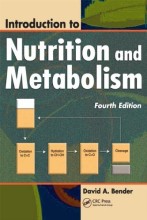NP14 Heat diagram (comfort zone)
14 important questions on NP14 Heat diagram (comfort zone)
What are (the) temperature zone"s
- homeothermic zone ± physiological
- thermoneutra zone (TNZ) ± metabolic
- comfort zone ± instinctive, behaviour
Thermoneutrality
- where in a graph do you find the thermoneutral zone (TNZ)
Where is the lower critical temperature (LCT) located? And where the upper critical temperature (UCT)?
- Higher grades + faster learning
- Never study anything twice
- 100% sure, 100% understanding
Where is the thermal comfort zone located compared to the TNZ
Thermoneutral zone (TNZ, metabolic) =
The heat production vs environm
No consequences for energy requirements
Comfort zone (instinctive - behaviour)
The heat production vs environmental temp. is constant.
Temp-regulation is not unpleasant. Preferred temp-range. Motivation!
Personal comfort zone?
You will get an impression when you discuss what will happen upon an increase/decrease of environmental temperature.
comfort zone is about 5 degrees window, from 18 - 23 *C
What is on the x and y asses of the heat diagram / heat balance at different temperatures?
Y = heat load / heat loss (maintenance)
you can not get lower than 1 on the Y as , then you are dead
What is A, B and C on the heat diagram/heat balance at temp< body T?
and A-B and A-C
B = UCT
A-B = thermoneutra zone
A-C = comfort zone
Red line = passive heat loss (Hp)
Hp -> = constante x (s/i) x delta (Ts-Ta)
s= surface
i = insulation
Ts = skin temp
How can you get the skin temperature in a heat diagram?
In the image the skin temperature is 30*C
How can you determine the lower critical temperature (Tc)
How can you achieve a heat load = heat loss. Looking at the picture?
A:
B:
C:
D:
E:
A: more insulation, put on a cap [increase insulation]
B: You increase your environmental temperature [increase Ta]
C: it is not possible, because it is lower than 1 [start sweating]
D: increasing metabolic rate from 1 to 2 --> becoming more active [increase heat load]
E: [start sweating]
Increasing external heat load
When Ta is increased, you have to consider two different phases, which ones
- Ta <= Tb
- Ta >= Tb
Increasing external heat load; Ta >= Tb
Bx -> B0 = making use of maximal evaporation -> the line lowers because the rest will go the external heat gain (environment)
VI total heat load
VII is your UCT
II maintenance heat production
IV Ta > Tb; heat loss only by evaporation and external heat load from environment
V Max. Evaporation = evaporation capacity
VI external heat load (He) vs. Ta
VII UCT for maintenance heat production (B0)
VIII Evaporation space = Me - He
IX heat load = heat loss = max. Evaporation
The question on the page originate from the summary of the following study material:
- A unique study and practice tool
- Never study anything twice again
- Get the grades you hope for
- 100% sure, 100% understanding
































